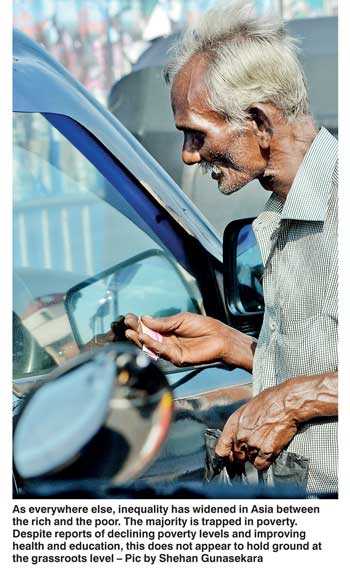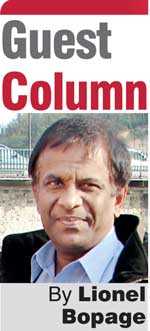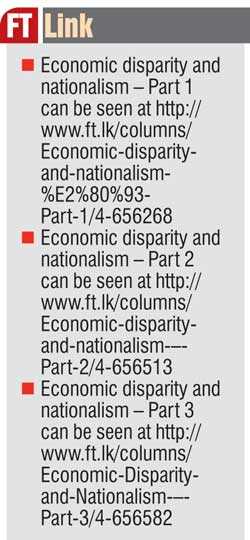Saturday Mar 15, 2025
Saturday Mar 15, 2025
Tuesday, 12 June 2018 00:00 - - {{hitsCtrl.values.hits}}
Civic patriots, nationalists and racialists
Civic patriots comprise not solely of individuals of white Anglo-Saxon background. According to them, citizenship is the primary determinant of group identity and not race, ethnicity or religion. Their allegiance appears to be for secular state, state institutions and civic values. So, non-Europeans and non-Christians may immigrate to Australia, but they need to assimilate into “Australian” culture. All of them are rabidly anti-Islam. They slanderously campaign against Islam and demand a ban on Muslim immigration. They believe those adhering to and observe Islam cannot assimilate into Australian society as they are “a supremacist, totalitarian and imperialist ideology, oppressive of non-Muslims, which aims at world domination, comparable to pre-modern Christianity”1.
They are extremely vocal on Islamist terrorism, female genital mutilation, child brides and alleged higher crime rates among Muslims as a group. They sympathise with Jewish people as they are seen being targeted by Islamist terrorists. According to them, in the Islamic dominated Middle East, Israel is the only country, where freedom for Western civilisation exists. If Israel falls to Islam, then the whole of Europe will also fall into Islamic hands. They also contend that with the colluding left, Muslims are acting as a fifth column to Islamise Australia. This does not make any sense when in the same tone they utter that Islam is oppressive towards women, LGBTIQ people and non-Muslims.
Nationalists like Civic Patriots are also actively anti-Islam. They also oppose other minority groups, but not so explicitly. However, they appear to believe that the Jews are responsible for Muslim immigration and are a major threat to Western civilisation. Though Muslims are their immediate target, Jews will become their future target. Unlike civic patriots, nationalists believe race and ethnicity are the prime determinant of identity, not citizenship.2
Racialists consider race as the primary determinant of identity, not nationality, culture or religion. They consist of diverse groups of which some are anti-Islam and some are not. There are neo-Nazis and similar streams, who are white supremacist, anti-Semitic, anti-homosexual and anti-non-white immigration. Racialists are generally hostile to all non-Europeans, but their main enemy is Jews. They rely on a misconception based on a pseudo-science of races that erroneously claim races can be ranked in a hierarchical manner according to an alleged physical, moral and intellectual fitness.
For example, the Australia First Party, which identifies as an Aryan party, is described as neo-Nazi, white nationalistic, anti-multicultural, socially conservative and protectionist in economic outlook. One of its leaders was convicted for shooting on the ANC representative’s house in 1984. They were associated with Cronulla riots against immigrants in 2005. In 2016, they supported the candidacy of a former Ku Klux Clan member in the US.3 Thankfully, the Australia First has had negligible electoral support so far.4
Reclaim Australia has held public protests in major cities against the building of mosques and several anti-Muslim events. Their protests in Melbourne have become violent. As they spread hate against community groups, some left groups and progressives have opposed such protests. Some of them peacefully protest to stop fascists and protect the democratic rights of immigrant communities, while some others tend to resort to violence, when the racialists turn violent.
In 1997 Pauline Hanson formed a nationalist, right wing populist party called One Nation, which was renamed Pauline Hanson’s One Nation in 2015. Pauline Hanson has been written into One Nation constitution as president for life5. With three Senators and four Members of Legislative Assembly, it was the strongest right wing nationalist group in Australia and held the balance of power in the Parliament. However, the situation is becoming more fluid with some members leaving Pauline Hanson and a new conservative crossbench Senate bloc from four different right wing nationalist parties in the formation.6Yet, since the last election all these members have voted with the current government to cut welfare benefits of the needy and were set to support proposed corporate tax cuts.
The victory of Donald Trump in the US emboldened the far-right groups to unite and hold public rallies and marches. In Australia a neo-Nazi and fascist hard-core racialist group called Antipodean7 Resistance incited hatred and violence against the Jewry and the LGBTI community. So far, three nationalist group leaders have been fined for inciting violence against Muslims in Bendigo. Since then, many nationalists appear to have gone quiet, perhaps for regrouping to reappear in 2018.
Inequality in Asia
As everywhere else, inequality has widened in Asia between the rich and the poor. The majority is trapped in poverty. Despite reports of declining poverty levels and improving health and education, this does not appear to hold ground at the grassroots level. Issues such as pollution, diseases and climate change continue to worsen. Inequality within countries and between them has widened. For example, the Gini Coefficient has increased during the last thirty years. Regimes have drastically cut down investment on universal education and healthcare. With increasing privatisation of and the reduction of investment in these segments, the quality of both education and healthcare has come down.
The situation is no different in Sri Lanka. Currently, some appear to be looking for a Führer to preserve Sinhala identity, culture, values and traditions. Many front organisations have been set up not only in Sri Lanka, but among the non-resident Sinhala communities in order to create a mono-cultural nationalist tsunami. They have most of the characteristics that define patriot and racialist political tendencies. They are of many varieties: anti-Tamil, anti-Islam, anti-Indian, anti-Western and pro-Sinhala Buddhist. Yet, other than the predominant national, cultural and religious bias, there is no alternative policy platform on the rising social and income inequity or an action plan for the future. Nothing new except just more of the same with a craving for preserving the executive presidency and bringing back totalitarian family rule, perhaps with ferocious vengeance!
As has happened around the world, demagogues are looking for a set of docile yes individuals, who will then follow orders without any questions asked, like the henchmen of Hitler and Mussolini did, to set this totalitarian trap up. Already such henchmen appear to have occupied many ranks of the state apparatus, who have in the past had enjoyed all the privileges, perks and benefits both legal and illegal of such a regime. These rentiers are eagerly waiting to serve a Führer and bask in the fascist aura with its attendant perks and violence.
Conclusion
Pre-World War II history of the far right had been closely intertwined with that of the ruling elite. Unlike the left, the far right has enjoyed the tacit, and at times active, support of certain sections of the political class, the military, the police and the wealthy. This has allowed the far-right to maintain a veneer of respectability. Despite their anti-democratic and illegal activities like employing secret armies, planning to overthrow governments, people have elected regimes brutally repressing their opponents.
The far right’s pledge of a return to a golden past, one which is racially and ethnically pure is buttressed with patriarchal, racist and homophobic values. In too many instances such pledges have produced electoral success. This has happened in Europe, Australia and the US, where far-right conservative groups raise the issue of immigration giving it a high pitch among the populace.
Attempts to portray the far right and the left as intolerant mirror images of each other is not only incorrect, but also falsifies facts and protects certain covert interests. The far-right usually belongs to the upper echelons of society. Despite the hidden link being not so clearly visible, the far right is closely entwined with the ruling elite both at political and bureaucratic level. The security forces in most countries have attacked the left with derision and anger more than they have the far right.
Unfortunately, some in the left based on nationalistic totalitarian ideology have also contributed to such attacks. Sri Lanka is an example for such a case. They do not question the policies such as privatisation of state assets and dismantling of the welfare state straining societies in many countries. They start blaming ethnic groups for this situation. This unfortunately may lead some left voters to mistakenly identify some right-wing parties as serving workers’ interests. They would see this shift to the right as a combination of ethnic nationalism with the global war on terror.
Across the globe, far right nationalist and populist groups have arisen for a myriad of reasons, it is usually a toxic combination of local issues, global economic practices and movement of people escaping wars, pogroms and famine. Some in France, Italy, Austria and Hungary for example, have gained support by establishing an ambivalent relationship with fascist and Nazi past of their countries; some in the Netherlands, Denmark, Poland, Sweden, and Switzerland for example, by focusing primarily on a perceived threat from Islam to national culture; some in Hungary, Greece, Italy, and the UK for example, by focusing on a perceived threat to their national identities from ethnic minorities and others in Poland, Romania and Bulgaria for example, endorsing a fundamentalist Christian reactionary agenda.
Despite the professed commitment of the ruling class to democracy, they are in fact quite amenable to the idea of dictatorship when their economic interests are threatened. The far right can trace its heritage, both politically but in many cases also genetically to the colonial and pre-colonial interests of the nineteenth century, who regarded democracy as an intolerable intrusion on their divine right to dominate society. If such groups are able to realise their totalitarian aspirations, bloodshed against non-white, non-Christian immigrant communities will become unavoidable.
In order to stop totalitarian groups and demagogues, our commitment to fighting economic disparity and income inequality becomes essential. Unless acute economic disparities and income inequalities are alleviated fascist trends could take hold in many parts of the world in the not so distant future. It therefore becomes our duty and responsibility to staunchly oppose and to actively contest their pernicious rise – we can do no less.
(This is the final part of this series of articles.)
Footnotes
1 Nathan J. 31 January 2018, The Rise of Australia’s Activist Far Right: How Far Will It Go? Available at: http://www.abc.net.au/religion/articles/2018/01/31/4796789.htm
2 Ibid
3 Wikipedia 23 May 2018, Australia First Party: Available at: https://en.wikipedia.org/wiki/Australia_First_Party
4 Moore A 1995, The Right Road: A History of Right-wing Politics in Australia, Oxford University Press.
5 The Guardian, 13 May 2018. Available at: https://www.theguardian.com/australia-news/2018/may/13/pauline-hanson-written-into-one-nation-constitution-as-effective-president-for-life
6 Gribbin Caitlyn 6 June 2018, ABC News, Available at: http://www.abc.net.au/news/2018-06-06/conservatives-forming-powerful-new-senate-bloc/9837998
7 Incomparable; or diametrically opposed; or situated at opposite sides of the Earth; or of, or pertaining to Australia or New Zealand.
Related articles:
Economic disparity and nationalism – Part 1
Discover Kapruka, the leading online shopping platform in Sri Lanka, where you can conveniently send Gifts and Flowers to your loved ones for any event including Valentine ’s Day. Explore a wide range of popular Shopping Categories on Kapruka, including Toys, Groceries, Electronics, Birthday Cakes, Fruits, Chocolates, Flower Bouquets, Clothing, Watches, Lingerie, Gift Sets and Jewellery. Also if you’re interested in selling with Kapruka, Partner Central by Kapruka is the best solution to start with. Moreover, through Kapruka Global Shop, you can also enjoy the convenience of purchasing products from renowned platforms like Amazon and eBay and have them delivered to Sri Lanka.
Discover Kapruka, the leading online shopping platform in Sri Lanka, where you can conveniently send Gifts and Flowers to your loved ones for any event including Valentine ’s Day. Explore a wide range of popular Shopping Categories on Kapruka, including Toys, Groceries, Electronics, Birthday Cakes, Fruits, Chocolates, Flower Bouquets, Clothing, Watches, Lingerie, Gift Sets and Jewellery. Also if you’re interested in selling with Kapruka, Partner Central by Kapruka is the best solution to start with. Moreover, through Kapruka Global Shop, you can also enjoy the convenience of purchasing products from renowned platforms like Amazon and eBay and have them delivered to Sri Lanka.